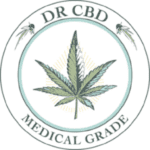Cancer is a big deal all around the world. It’s not just about the sickness itself, but how it affects everything from our health systems to our wallets. As more people get diagnosed, we see the cracks in how we handle it, especially in places that don’t have as much access to good care. This article digs into these issues and looks at the science behind cancer, how we find it, and the new ways we’re trying to treat it.
Key Takeaways
- Cancer affects millions globally, straining healthcare and economies.
- Genetic changes and the environment around tumors play key roles in cancer.
- New tech in diagnosis helps catch cancer earlier and more accurately.
- Personalized treatments are becoming more common, but they have challenges.
- AI is changing how we approach cancer research and treatment.
The Growing Burden of Cancer Worldwide
Rising Incidence Rates
Cancer’s shadow looms larger every year. More people are being diagnosed with cancer than ever before, and the numbers keep climbing. It’s like a wave that won’t stop growing. This isn’t just happening in one place; it’s a global thing. So, why is this happening? Well, we’re living longer, and with longer lives comes more chances for cancer to develop. Plus, lifestyle changes, like eating habits and less physical activity, play a part too. It’s a mix of things making cancer more common.
Economic Impact on Healthcare Systems
The financial side of cancer is a big deal. Treating cancer isn’t cheap, and it’s putting a strain on healthcare systems everywhere. Hospitals and clinics are spending huge amounts to keep up with the demand for treatments. This means that healthcare budgets are getting stretched thin. It’s not just about the cost of drugs and treatments, but also about the time and resources needed to care for patients. The economic burden of cancer is felt by everyone, from governments to individual families.
Global Disparities in Cancer Care
Not everyone gets the same level of care when it comes to cancer. There’s a big gap between countries that have lots of resources and those that don’t. In some places, advanced treatments are available, while in others, basic care is hard to come by. This inequality means that where you live can affect your chances of surviving cancer. It’s a tough reality that highlights the need for more balanced healthcare access worldwide.
"Cancer doesn’t care about borders, but access to treatment often does."
In summary, cancer is a growing problem that affects us all. Whether it’s the increasing number of cases, the financial burden on healthcare systems, or the uneven access to care, it’s clear that cancer is a challenge that requires attention and action on a global scale.
Understanding the Biology of Cancer

Genetic Mutations and Cancer
Cancer often starts with changes in the DNA of cells, known as genetic mutations. These mutations can be inherited or acquired during a person’s life due to environmental factors like smoking or exposure to radiation. Mutations can lead to uncontrolled cell growth, which is the hallmark of cancer. Some common mutations affect genes that regulate cell division, repair DNA, or signal cells to die when they’re damaged. Understanding these mutations helps researchers develop targeted therapies that specifically attack cancer cells without harming normal cells.
The Role of Tumor Microenvironment
The tumor microenvironment is the surrounding area of a tumor, including blood vessels, immune cells, and other cell types. This environment plays a crucial role in how a tumor grows and spreads. Tumors can manipulate their microenvironment to support their growth by attracting blood vessels, suppressing the immune response, and altering nearby normal cells. Researchers are exploring ways to disrupt these interactions to prevent cancer from spreading. Targeting the tumor microenvironment is a promising area of cancer research.
Cancer Metastasis Mechanisms
Metastasis is when cancer cells break away from the original tumor and form new tumors in other parts of the body. This process is complex and involves several steps, including invasion of nearby tissues, entry into the bloodstream or lymphatic system, and colonization of new sites. Metastasis is responsible for most cancer-related deaths. Scientists are studying the mechanisms of metastasis to find ways to stop it. This includes understanding how cancer cells survive in the bloodstream and how they adapt to new environments.
Cancer biology is like a puzzle with many moving parts. Each discovery helps piece together the picture of how cancer starts and spreads, leading to better treatments and outcomes for patients.
Innovative Approaches in Cancer Diagnosis
Advancements in Imaging Technologies
Imaging technology has come a long way, especially in the world of cancer diagnosis. New imaging tools are now able to spot tumors that were once invisible. These advancements mean doctors can find cancer earlier, which is a big deal. Earlier detection often means better outcomes for patients. Some of the latest technologies include 3D mammography and PET scans that can see even the smallest changes in the body.
Biomarker Discovery and Utilization
Biomarkers are like little flags in the body that can signal the presence of cancer. Scientists are finding new biomarkers all the time, which helps in diagnosing cancer more accurately. These discoveries mean that doctors can personalize treatments based on a person’s unique biomarker profile. This tailored approach is changing the way cancer is treated, making it more effective and often less harsh on the body.
Liquid Biopsy Techniques
Liquid biopsies are a newer method that involves taking a simple blood sample to find cancer cells or DNA from tumors. It’s less invasive than traditional biopsies and can be done more frequently. This technique is especially useful for monitoring how a cancer is responding to treatment. It’s also helpful in catching any changes in the cancer’s genetic makeup, which can guide adjustments in therapy.
With these innovations, cancer diagnosis is becoming less about guesswork and more about precision. The ability to detect and monitor cancer with such accuracy is transforming the landscape of cancer care.
Personalized Medicine in Cancer Treatment
Tailoring Therapies to Genetic Profiles
Personalized medicine is changing cancer treatment by customizing therapies based on a patient’s genetic makeup. Understanding genetic mutations in tumors helps doctors choose the best treatments. This approach increases the chances of success and reduces side effects. Doctors can use genetic tests to find specific mutations and select drugs that target them. This method is more effective than traditional treatments, which often take a one-size-fits-all approach.
The Promise of Immunotherapy
Immunotherapy is another exciting area in personalized medicine. It uses the body’s immune system to fight cancer. Different types of immunotherapy, like checkpoint inhibitors and CAR T-cell therapy, have shown promising results. These treatments are often tailored to the individual’s cancer type and genetic profile. They can be more effective and have fewer side effects than conventional treatments.
Challenges in Personalized Cancer Care
Despite the promise, there are challenges in personalized cancer care. One major issue is the high cost of genetic testing and targeted therapies. Not everyone has access to these advanced treatments, leading to disparities in care. There’s also the challenge of interpreting complex genetic data, which requires specialized knowledge and resources. Additionally, not all patients respond to personalized treatments, and more research is needed to understand why.
The Role of Artificial Intelligence in Cancer Research
AI in Early Detection and Diagnosis
Artificial Intelligence (AI) is making waves in the medical field, especially in cancer research. One of its most promising applications is in the early detection and diagnosis of cancer. Algorithms can analyze medical images, like X-rays and MRIs, with incredible precision, sometimes even spotting things that human eyes might miss. This ability to catch cancer early can significantly increase survival rates. Doctors are now using AI tools to help interpret complex data, leading to quicker and more accurate diagnoses.
Machine Learning for Treatment Planning
Machine learning, a subset of AI, is transforming how treatment plans are developed. By analyzing vast amounts of data from previous cases, machine learning models can predict how patients might respond to different treatments. This can help doctors tailor treatments to individual needs, potentially improving outcomes. Imagine a world where your treatment plan is as unique as your fingerprint—AI is paving the way for this kind of personalized care.
Ethical Considerations in AI Applications
With all its benefits, AI in cancer research also brings up ethical questions. Who is responsible if an AI system makes a mistake? How do we ensure patient data is kept private when used to train AI models? These are some of the tough questions that researchers, doctors, and ethicists are trying to answer. It’s crucial to balance innovation with responsibility, ensuring that AI tools are used safely and ethically.
As AI continues to evolve, it holds the potential to revolutionize cancer research and treatment. But with great power comes great responsibility, and it’s up to us to use these tools wisely.
For those interested in natural treatment options, Dr. CBD offers a range of products focusing on non-intoxicating compounds like CBD, which may provide additional support in cancer care.
Emerging Therapies and Clinical Trials

Breakthroughs in Targeted Therapies
In recent years, we’ve seen some pretty amazing advances in targeted cancer therapies. These treatments are all about attacking cancer cells, while leaving healthy cells alone. This means fewer side effects and more effective treatment. Scientists are developing drugs that zero in on specific molecules involved in cancer growth. Some of these drugs are already available, and they’re making a real difference for patients. Here’s a quick look at some of the latest breakthroughs:
- PARP inhibitors: These are used to treat ovarian and breast cancers, especially in patients with certain genetic mutations.
- BRAF inhibitors: These are helping patients with melanoma, particularly those with a specific BRAF mutation.
- ALK inhibitors: These are used in treating some types of lung cancer, offering hope where traditional therapies failed.
The Importance of Clinical Trials
Clinical trials are the backbone of developing new cancer therapies. They help us figure out what works, what doesn’t, and why. Without them, we wouldn’t have many of the treatments we rely on today. Participating in a clinical trial can be a tough decision for patients, but it’s a vital step in the fight against cancer.
Joining a clinical trial means contributing to research that could save lives in the future. It’s about being part of something bigger than oneself.
Patient Access to Experimental Treatments
Access to experimental treatments can be a lifeline for patients with few options. But getting these treatments isn’t always easy. There are hurdles like cost, location, and eligibility criteria. Some patients travel great distances or navigate complex systems just to get a chance at these cutting-edge therapies.
- Financial barriers: The cost of experimental treatments can be high, and not all insurance plans cover them.
- Geographic barriers: Not everyone lives near a research hospital or clinic that offers clinical trials.
- Eligibility criteria: Patients must meet specific criteria to participate, which can sometimes exclude those who might benefit.
Despite these challenges, the hope and potential offered by emerging therapies and clinical trials continue to inspire both patients and researchers alike.
For more on how innovative treatments are reshaping cancer care, check out our Cannabidiol (CBD) insights.
The Psychological Impact of Cancer Diagnosis
Coping Strategies for Patients
Finding out you have cancer can be a huge shock. Many people feel scared, anxious, or even angry. It’s totally normal to have these feelings. Patients often need ways to manage their emotions. Some find comfort in talking to friends or family, while others might benefit from professional counseling. Joining a support group can also help. Here, patients share experiences and learn from each other. It’s all about finding what works best for you.
Support Systems and Counseling
When it comes to dealing with cancer, having a strong support system is key. Family, friends, and counselors play a big role in helping patients cope. They provide not just emotional support but practical help too. For instance, family members might help with daily tasks or accompany patients to appointments. Counseling offers a safe space to express fears and concerns, which can be incredibly therapeutic.
The Role of Mental Health Professionals
Mental health professionals, like psychologists and psychiatrists, are crucial in cancer care. They help patients navigate the emotional rollercoaster that often comes with a diagnosis. These professionals can provide therapy, prescribe medications for anxiety or depression, and teach coping skills. Their goal is to help patients maintain a sense of normalcy and improve their quality of life.
Cancer doesn’t just affect the body; it takes a toll on the mind too. Addressing the psychological aspects is just as important as treating the physical symptoms. Patients who receive mental health support often find it easier to deal with their diagnosis and treatment.
Cancer Prevention and Risk Reduction

Lifestyle Changes to Lower Risk
Making simple lifestyle changes can significantly reduce the risk of developing cancer. Quitting smoking is one of the most effective ways to lower your cancer risk, as tobacco use is linked to numerous types of cancer. Regular physical activity and maintaining a healthy weight also play a crucial role in prevention. Eating a balanced diet rich in fruits, vegetables, and whole grains, while limiting red and processed meats, can further minimize risk.
Vaccinations and Cancer Prevention
Vaccinations offer a proactive approach to cancer prevention. The HPV vaccine, for instance, can prevent cervical and other types of cancers linked to the human papillomavirus. Similarly, the hepatitis B vaccine can reduce the risk of liver cancer. Ensuring you and your children are vaccinated can be a simple yet powerful step in cancer prevention.
Screening and Early Detection Programs
Early detection is key to successful cancer treatment. Participating in regular screening programs can catch cancer in its early stages, when it’s most treatable. Mammograms, colonoscopies, and Pap tests are examples of screenings that can save lives. It’s important to follow the recommended guidelines for screenings based on your age, gender, and family history.
Taking charge of your health through lifestyle changes, vaccinations, and regular screenings can substantially lower your risk of developing cancer. It’s about making informed choices and staying proactive about your health.
The Future of Cancer Treatment
Innovations on the Horizon
The landscape of cancer treatment is constantly changing, with new innovations emerging that promise to reshape how we approach this complex disease. One of the most exciting developments is the use of nanotechnology in drug delivery systems. These tiny particles can target cancer cells more precisely, reducing damage to healthy tissues and potentially improving the effectiveness of treatments. Another area of interest is the development of oncolytic viruses, which are engineered to infect and kill cancer cells while sparing normal cells. This approach not only helps in destroying tumors but also stimulates the immune system to fight cancer more effectively.
Integrating Technology in Treatment
Technology is playing a big role in cancer treatment, with tools like AI and machine learning helping doctors make more informed decisions. AI algorithms can analyze large amounts of data quickly, identifying patterns that might be missed by human eyes. This can lead to earlier diagnoses and more personalized treatment plans. Robotics is also making its mark, assisting in surgeries that require extreme precision. These advancements are making treatments less invasive and recovery times shorter.
Global Collaboration in Cancer Research
Cancer research is not limited by borders. Scientists around the world are joining forces to share findings and accelerate the development of new treatments. International clinical trials are becoming more common, allowing patients to access cutting-edge therapies regardless of where they live. Collaborative efforts also mean that resources are pooled, making research more efficient and comprehensive.
As we look to the future, the promise of new technologies and global partnerships offers hope for more effective and accessible cancer treatments. The journey is far from over, but each step forward brings us closer to a world where cancer can be managed more effectively.
In the meantime, exploring CBD products could offer additional support for cancer patients, providing relief from symptoms like anxiety and chronic pain while complementing traditional treatments.
The Economic Challenges of Cancer Treatment
Cost of New Therapies
Cancer treatment has come a long way, but with advancements come higher price tags. New therapies, especially those that are cutting-edge, often come with significant costs. The introduction of personalized medicine and targeted therapies can mean spending thousands, or even tens of thousands, per treatment cycle. This isn’t just a number on a bill; it affects real people, making it tough for many to afford the care they need.
Insurance and Access to Care
Having insurance doesn’t always mean you’re covered. Many insurance plans have gaps, and not all treatments are included. This can lead to patients paying out-of-pocket for life-saving treatments. Insurance limitations can result in delayed care or even skipping treatments altogether. It’s a maze that patients and families have to navigate, often without a clear path.
Financial Support for Patients
When facing a cancer diagnosis, financial stress can add to the burden. Thankfully, there are support systems in place. Here are some ways patients can find financial help:
- Non-profit organizations: Many offer grants or resources to ease the financial burden.
- Hospital financial aid: Some hospitals have programs to assist those in need.
- Community fundraisers: Local communities often rally around their own, helping to raise funds for treatment.
Dealing with the financial aspects of cancer treatment is like climbing a steep hill. It’s challenging, but with support and resources, it’s a hill that can be climbed.
The Role of Nutrition and Diet in Cancer Care

Nutritional Support During Treatment
When someone is going through cancer treatment, eating well can really help. Treatments like chemotherapy and radiation can mess with your appetite and make you feel nauseous. That’s why it’s important to focus on foods that are easy on the stomach but also packed with nutrients. Getting enough calories and protein is key to keeping your strength up. Some folks find that eating smaller meals more often works better than three big meals a day.
Dietary Guidelines for Cancer Survivors
Once treatment is over, the focus shifts to staying healthy and preventing cancer from coming back. Eating a balanced diet with lots of fruits, vegetables, and whole grains is usually recommended. These foods are rich in antioxidants that help protect your cells. It’s also a good idea to limit red and processed meats, as well as sugary drinks and snacks. Staying hydrated and keeping a healthy weight can also play a big role in recovery.
Research on Diet and Cancer Prevention
There’s a lot of interest in how diet might help prevent cancer in the first place. Some studies suggest that certain foods could lower your risk. For example, foods high in fiber like beans and whole grains might be protective. A plant-based diet, which includes lots of fruits and veggies, is often linked to a lower risk of some cancers. However, more research is needed to understand exactly how diet influences cancer risk.
Eating well during and after cancer treatment isn’t just about following a strict diet. It’s about finding what works for you and your body. Everyone is different, and what helps one person might not be the best for another. Listening to your body and working with healthcare providers can make a big difference.
Cancer Survivorship and Quality of Life
Long-term Health Monitoring
Living beyond cancer comes with its own set of hurdles. Survivors often need to keep a close watch on their health for years after treatment. Regular check-ups are crucial to catch any signs of cancer returning or new health issues cropping up. Doctors usually recommend a schedule of tests and scans tailored to each person’s situation. It’s not just about looking for cancer, but also managing other health problems that might pop up. Some survivors deal with side effects from treatment, like fatigue or heart issues, so keeping tabs on overall health is super important.
Rehabilitation and Recovery
Getting back to normal life after cancer isn’t always easy. Rehabilitation helps survivors regain strength and confidence. This might include physical therapy to improve movement and reduce pain, or occupational therapy to help with daily tasks. Sometimes, speech therapy is needed if cancer or treatment affected speaking or swallowing. Here’s a quick list of common rehabilitation services:
- Physical Therapy: Helps with movement and reducing pain.
- Occupational Therapy: Aids in daily activities and routines.
- Speech Therapy: Assists with communication and swallowing issues.
Community Support for Survivors
Community support plays a huge role in helping cancer survivors. Support groups offer a space to share experiences and feelings, which can be incredibly comforting. Many find it helps to talk with others who truly "get it." These groups often meet in person or online, making them accessible to many. Beyond emotional support, communities often organize activities that promote a healthy lifestyle, like exercise classes or nutrition workshops.
Living with and beyond cancer is a journey that involves not just the individual, but their family and community. It’s about finding a new normal and embracing life after cancer.
Incorporating premium CBD products into wellness routines can be another layer of support, offering potential benefits like stress reduction and improved sleep quality.
Conclusion
Wrapping up, cancer is a tough battle for anyone. It’s not just about the medical stuff, but the emotional rollercoaster too. We’ve seen how treatments have come a long way, with new tech and ideas making a real difference. But there’s still a lot to do. Doctors, researchers, and patients are all in this together, pushing for better solutions. It’s a journey, and while it’s not easy, every step forward brings hope. Let’s keep supporting each other and stay hopeful for more breakthroughs in the future.
Frequently Asked Questions
What is cancer and how does it start?
Cancer is when cells in the body grow out of control. It starts when changes happen in the genes that control cell growth.
Why are cancer rates going up around the world?
More people are getting cancer because of things like aging populations, unhealthy lifestyles, and better ways to find cancer early.
How does cancer affect the economy?
Cancer costs a lot of money for healthcare systems. Treating patients and doing research can be very expensive.
What new ways are there to find cancer early?
Doctors are using new tools like advanced imaging, finding special markers in the body, and liquid biopsies to catch cancer sooner.
How does personalized medicine help in treating cancer?
Personalized medicine means giving treatments based on a person’s unique genetic makeup, which can make treatments more effective.
What role does artificial intelligence play in cancer care?
AI helps doctors find cancer early, plan treatments, and even make new discoveries in research.
Why are clinical trials important for new cancer treatments?
Clinical trials help test new treatments to make sure they are safe and work well before they are used widely.
How can people lower their risk of getting cancer?
People can lower their cancer risk by making healthy lifestyle choices, getting vaccinated, and going for regular screenings.





